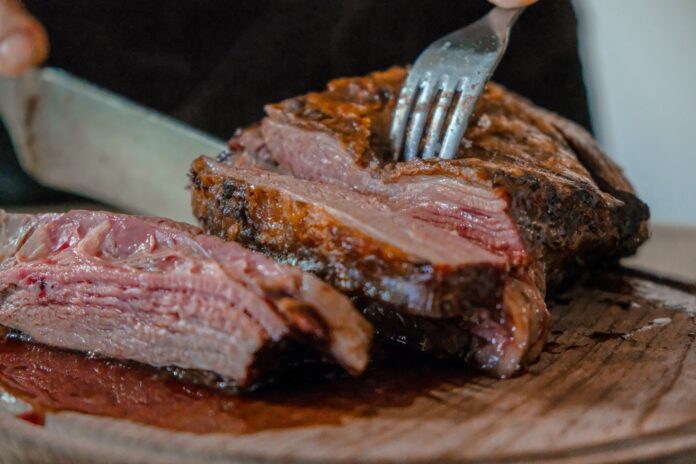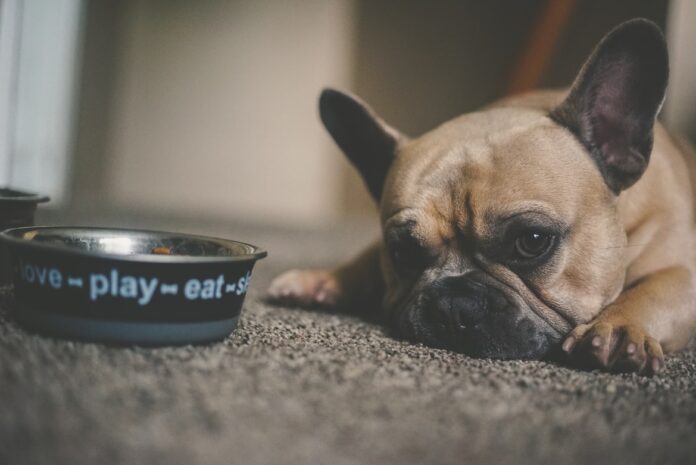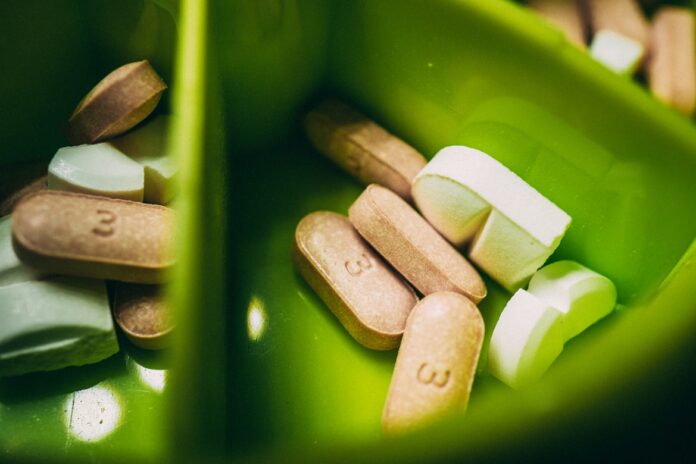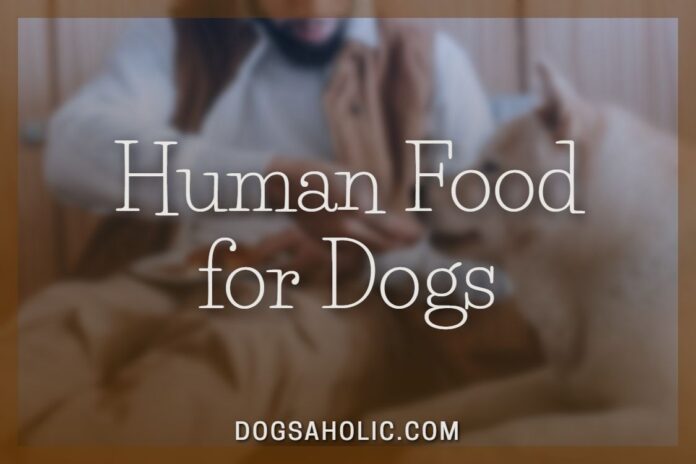Nutrition is one of the most important aspects of pet care – a varied and well-balanced diet greatly contributes to dogs’ overall health and wellbeing and can ward off various diseases.
That’s why your dog’s nutrition plan should be your primary focus. Young pups, adult dogs, and elderly animals have different nutrition and diet requirements. Knowing how to provide your canine friend with the best diet is essential to keeping him or her healthy and happy.
Fortunately, there are numerous commercially available dog foods that can help you establish a proper diet for your dog. But what about human food for dogs? What are dog owners’ choices if they cannot or do not want to feed their pet with commercially available dried, frozen or canned foods?
 A number of human foods are perfect for dogs but there are also foods dogs shall never eat.
A number of human foods are perfect for dogs but there are also foods dogs shall never eat.
Whether you want to reward your pet with a delicious bite from your dinner or you have to occasionally substitute a meal with something from the fridge, make sure you are absolutely familiar with which human food for dogs is safe, nutritious, and tasty.
The following tips and advice will help you figure out which human food products are safe and healthy for your dog, which table scraps and snacks make perfect dog treats and how to plan a home-cooked diet for your pet.
What Human Food Can Dogs Eat?

After the long list of foods that household dogs must not eat, you may be wondering what human food dogs can eat.
The good news is that there are plenty of products that are healthy and perfectly safe for your pet. Of course, provided that these foods are prepared correctly. First, let’s see which the human foods dogs can eat:
1. Meat

Canine animals are carnivores and that is why meat is an essential part of a healthy and balanced diet. Lean meat, poultry, and fish are fine choices for your pet’s diet, as long as you follow these simple guidelines:
- Any meat, poultry or fish meals you serve your dog are always cooked and de-boned.
- Feed your pet with really lean cuts and always skin poultry.
- Avoid feeding your pet with any processed meat products such as salami, ham, bacon, and so on. Chilly, spicy or salty meat products or meals should also be avoided.
- Avoid feeding your dog with old, moldy or spoiled meat.
- Always cut meat into easy-to-eat bites.
2. Whole grains

Just like humans, dogs can benefit from a diet that is rich in whole grains. Whole grains contain a variety of essential nutrients (important vitamins and minerals; fibers; high amounts of proteins, low amounts of fats) and can reduce the risk of certain health problems in dogs.
Additionally, whole grains are an excellent energy source – they will provide your dog with a lot of energy without causing spiking blood sugar levels. Here are some suitable whole-grain human foods you may consider for your pet:
- Rice and brown rice, in particular, is one of the safest human foods your dog can eat. Brown rice contains vitamin B3 and microelements such as manganese, magnesium, and selenium. Additionally, it is an excellent source of fiber. Of course, the rice should be served cooked, without any added sugar, salt or spices.
- Another excellent whole-grain human food that dogs can eat. Oats are one of the most nutritious options for pets – they contain a lot of proteins and carbohydrates as well as numerous essential ingredients that promote cardiovascular and immune system health. Remember to feed your pet with plain cooked oatmeal only.
- Pasta and bread. Wheat or corn pasta and bread are human foods that dogs can eat safely. Once again, do not feed your dog with salted or spicy pasta and breadstick to plain, simple products.
2. Dairy products

Milk, yogurt, and cheese are a great addition to your dog’s diet as they contain lots of vitamins and minerals, essential for your dog’s health. On the other hand, not all dogs tolerate dairy products:
- Most vets recommend milk to pups and young dogs only. The reason is that adult dogs, like humans, might be sensitive to the enzyme lactose – an enzyme that is found in all common dairy products. Dogs that are sensitive to lactose may suffer from upset stomach, diarrhea, or vomiting when fed milk as milk contains the highest concentration of lactose compared to all common dairy products. So, is milk among the human foods that dogs can eat? Yes, as long as your pet has no problems digesting it.
- Most cheeses, including cottage cheese and cream cheese, are acceptable for dogs provided that they are given in small quantities and do not constitute the basic meal for your dog. If you want to reward your pet with something tasty, look for low-sodium, low-fat cheeses.
- By far, this is the number one human dairy product that is safe and healthy for dogs. Of all dairy products, yogurt contains the least amount of lactose, so it’s suitable even for lactose intolerant pets. Organic, low-fat yogurt, without added sweeteners, is a perfect little snack for any dog.
3. Fruits

If you want to give your dog a tasty sweet bite, go for one of the dog-approved fruits: apple pears, bananas, strawberries, raspberries, cranberries, blueberries, blackberries, melons, watermelons, kiwis, pumpkin, and so on. The only fruits that dogs cannot eat are persimmons, grapes, raisins, currants, and avocado.
Although fruits offer a great number of health benefits, be moderate in the portions you feed your dog: an inch of apple or pear slice, banana, watermelon or melon wedge, 2-3 berries, 1 strawberry, a slice of kiwi and orange are enough for a special treat without causing an upset stomach. Plus, always remove any peels, seeds, and/or pits as some are known to be toxic for dogs.
4. Vegetables

With some exceptions (onions, garlic, mushrooms, Rhubarb leaves) vegetables are not only human food dogs can eat but recommended ingredients for household dogs’. The most suitable vegetables for dogs are potatoes (roasted or boiled), broccoli and Brussels sprouts (steamed or prepared in a microwave), baby carrots (raw or boiled), and cucumbers (raw or boiled), beans (cooked green beans, black beans, peas).
Like fruits, vegetables must be cleaned, peeled, and de-seeded before being offered to your dog. Again, serve moderate portions – 1-2 tablespoons or bite-size pieces are enough.
5. Nuts

After we have covered the larger food groups, it is time to say a word or two about nuts. Are nuts safe for pets? Can you give your dog nut and/or nuts-derived products? Asked these questions many vets or dog nutritionists will simply ask “Why do you want to give nuts to your pet?”
In fact, that is a good question to consider if you are wondering whether or not to give nuts to your pooch – nuts cannot and must not be the main part of your pet’s diet and that makes them only suitable for occasional rewards. In general, dogs can eat nuts, although some dogs may have trouble processing and digesting nuts.
The only nuts that are truly toxic to dogs and must be avoided are macadamia nuts – even a small amount can cause serious neurological problems such as seizures, tremors, dizziness, or temporary paralysis.
Walnuts, peanuts, pistachios, almonds, cashews, and sunflower seeds are all suitable for dogs but in moderate amounts, as they are extremely rich in fats and may easily cause indigestion in dogs. If you are eager to give nuts to your pet, make sure that they are raw and unsalted, and that you have removed any shells.
To make it easier for yourself, it would be a good idea for you to check out this article on making dog food at home to get you started.
Having said all of the above, it is important to mention that dog owners should not only focus on what human foods can dogs eat, but need to consider another more important issue. What the primary nutrition source of their pet will be?
 In other words, every dog owner should decide whether they will feed their dog human food full time, occasionally, or use certain products as rewards every now and than.
In other words, every dog owner should decide whether they will feed their dog human food full time, occasionally, or use certain products as rewards every now and than.
How to Create a Balanced Diet Using Human Foods That Dogs Can Eat?
Most vets suggest that only 5-10% of household dogs’ diet should consist of human food; the rest should be commercially available dry, canned or frozen dog foods. Then again, many dog owners prefer to cook for their pets and avoid processed pet foods as much as possible. Which is the best option?
Clearly, both options are acceptable as long as you can provide a well-balanced diet rich in all essential nutrients your pet needs to be healthy. The following tips will help you create a balanced and complete diet for your dog using human foods:
1. Balance the three basic nutrients

Every meal you prepare should include the right balance of the three essential nutrients: carbohydrates, proteins, and fat. Carbohydrates come from whole grains and vegetables, proteins, and fat – from meat. A dog’s meal should consist of about 50% proteins, preferably lean meat, fish, or poultry, and about 5% of fat.
The rest can be a mix of whole grains and vegetables. The best protein sources include beef (ground or cubed), skinless and boneless turkey and chicken, lamb, fish, and eggs (in moderation). Carbohydrates are the main energy source for dogs. Whole grains are an excellent source of energy, and brown rice and oatmeal are two of the best choices.
Although excess fat is harmful to dogs as it leads to obesity and other health problems, a totally fat-free diet is also not recommended. Lean cuts of meat and a little bit of vegetable oil should provide your canine friend with all the fat they need.
2. Create a variety
Every home-cooked meal for your pet should not only be balanced but should contain a variety of different ingredients. The reason is that certain vitamins, minerals and essential fatty acids are only present in some types of foods.
Feeding your pet with the same food over a long period of time actually creates a very unbalanced diet. For example, instead of feeding your canine friend with chicken and brown rice every day, add extra ingredients such as fish or quinoa.
3. Additional supplements

Commercially available dog foods contain all required vitamins and minerals, so additional supplementation is rarely needed. Then again, a home-cooked diet may lack certain vitamins, minerals, and essential oils, so some supplements may be necessary.
The age and general health of your dog are also important when deciding whether what type and how much supplementation is necessary. Home-cooked dogs’ diets usually lack Calcium, Vitamin D, and E so usually there are the supplements household dogs receive daily.
In any case, it is recommended to consult a vet regarding the correct amount and type of supplementation your pet may need.
4. Stick to tested recipes
First-time dog owners and anyone who feels uncertain about creating a well-balanced and varied home-cooked diet for their pet should stick to proven and tested dog food recipes. Another option is to consult a dog nutrition specialist or even ask them to create recipes specifically for your dog.
And please avoid the common mistakes that many pet owners make, which are laid on in this article on 5 common errors of dog nutrition.
What Table Scraps Can Dogs Eat?

Most dogs enjoy receiving little tasty bites from your lunch and dinner. Most dog owners enjoy rewarding their pets with table scraps too.
However, have you ever considered how safe are these leftovers for your dog? Human food leftovers can make wonderful dog treats but must not be used as a main source of nutrition.
In addition, not all leftovers are safe for your dog. The following guidelines will help you decide what table scraps can your dog eat and how much leftovers should be included in your dog’s diet:
1. Dog-approved table scraps
Pet-friendly foods you can share with your four paw friend include boiled or steamed vegetables (without onion and garlic), plain pasta (without sauce), low-fat cheese, including cream cheese, roasted lean meat, fish, or skinless poultry, hard-boiled, scrambled or poached eggs, fruits.
Stay away from table scraps that you consider tasty but are dangerous for your dog’s health – your dog will prefer a piece of beef roast much more than a bar of chocolate!
2. Moderate amount of table scrap treats

Treats, commercially available, special home-cooked bites, or table scraps, must not constitute the main part of your dog’s diet. In fact, you should keep dog treats to a minimum not only to maintain your dog’s diet balanced, but because treats are an essential component in training – offering your dog treats often and with no reason can easily spoil him or her.
If you really want to reward your dog with a bite from your lunch or dinner, be very careful what you are giving your dog (is it red meat, bread, vegetables, etc) and how much is it so that you can adjust your dog’s diet accordingly.
3. Table scraps don’ts
Feeding your dog with home-cooked meals is very different than rewarding him or her with table scraps. The main difference is in the ingredients and the way food was prepared: human recipes typically contain an excess of salt, black pepper, and various other spices, and our favorite foods are often fried.
As you can see, your lunch or dinner might not be entirely suitable for your canine friend – avoid salty and/or spicy foods, anything that contains too much sugar or fat, as well as any food products that are known to be potentially toxic for dogs (raisins, grapes, onion, garlic, avocado, fruit pits, and seeds, etc).
4. Avoid junk food

Junk food is not necessarily good for humans but it can be really harmful to dogs.
Pizza leftovers, French fries, potato chips, candies, chocolate bonbons, and other similar bites are not suitable for your dog.
5. Share human food correctly
When planning to use table scraps as dog treats, what human food can your dog eat becomes only half of the issue. Regardless of the type and amount of food you are going to share with your pet, you should know how to do this correctly.
The general rule is not to feed your dog straight from the table and not during meal times. Failing to observe these simple rules will certainly ruin your dog’s discipline and turn him or her into a beggar.
People have been feeding their canine friends with table leftovers for decades.
Nowadays, opinions regarding human food for dogs vary drastically – some vets and nutrition specialists totally deny the benefits of home-cooked human food for dogs, others consider occasional treats to be OK, and third believe that an organic, home-cooked diet is better than any commercially available dog food formula.
However, that isn’t to say that there aren’t some brands that are paving the way in healthy dog nutrition. Please read this article on the top 10 healthiest dog food brands.
Clearly, tossing everything that’s left on the table after lunch or dinner in your dog’s bowl is not a good idea – some food products are safe for people but toxic to dogs.
The good news is that a large number of the ingredients that constitute your diet are perfectly safe and healthy for your canine friend.
So, if you are interested in cooking for your dog or in rewarding him or her with a tasty bite from the table, make sure you stick to pet-friendly human foods, prepared in a way that’s safe and healthy for your pet.




